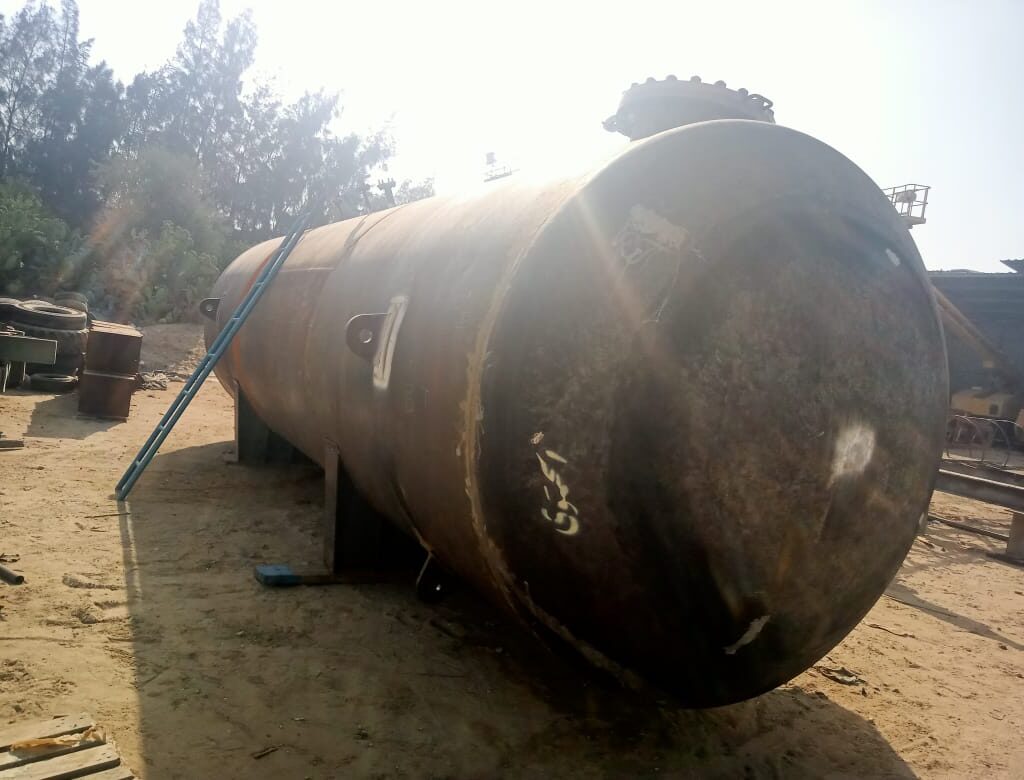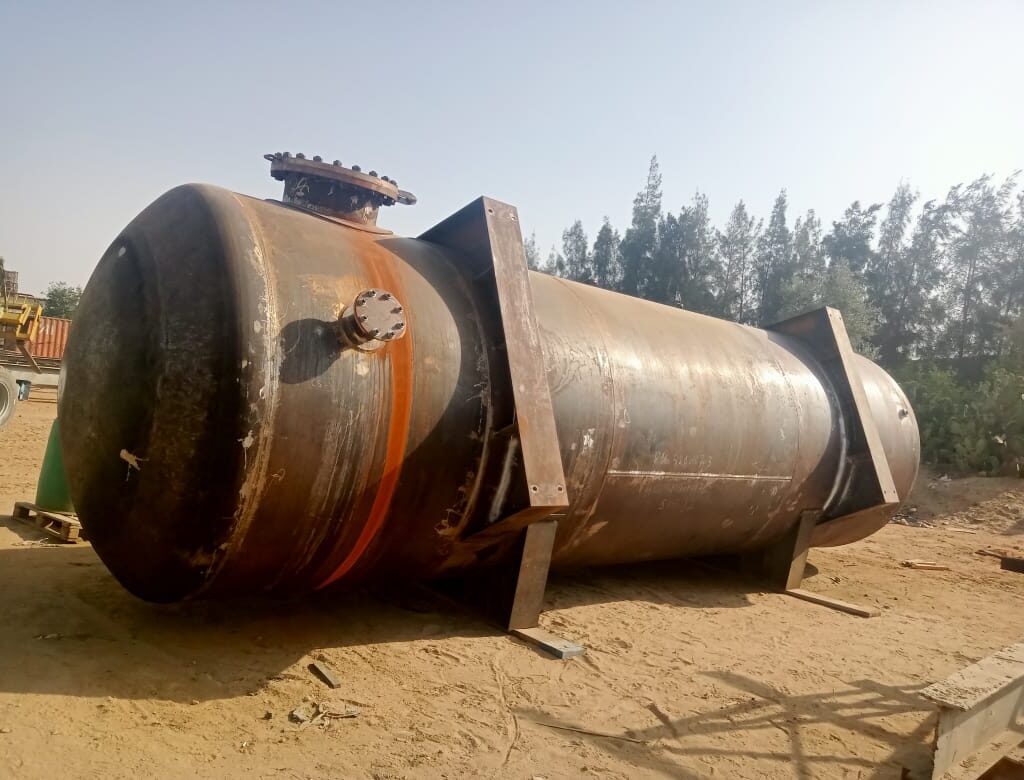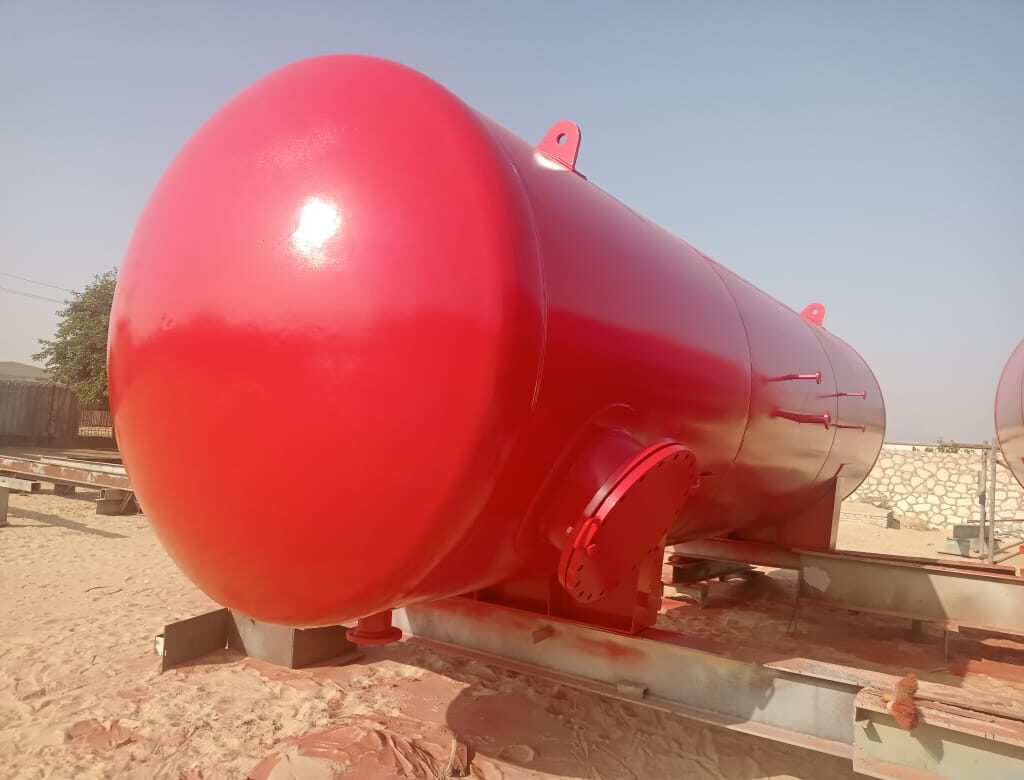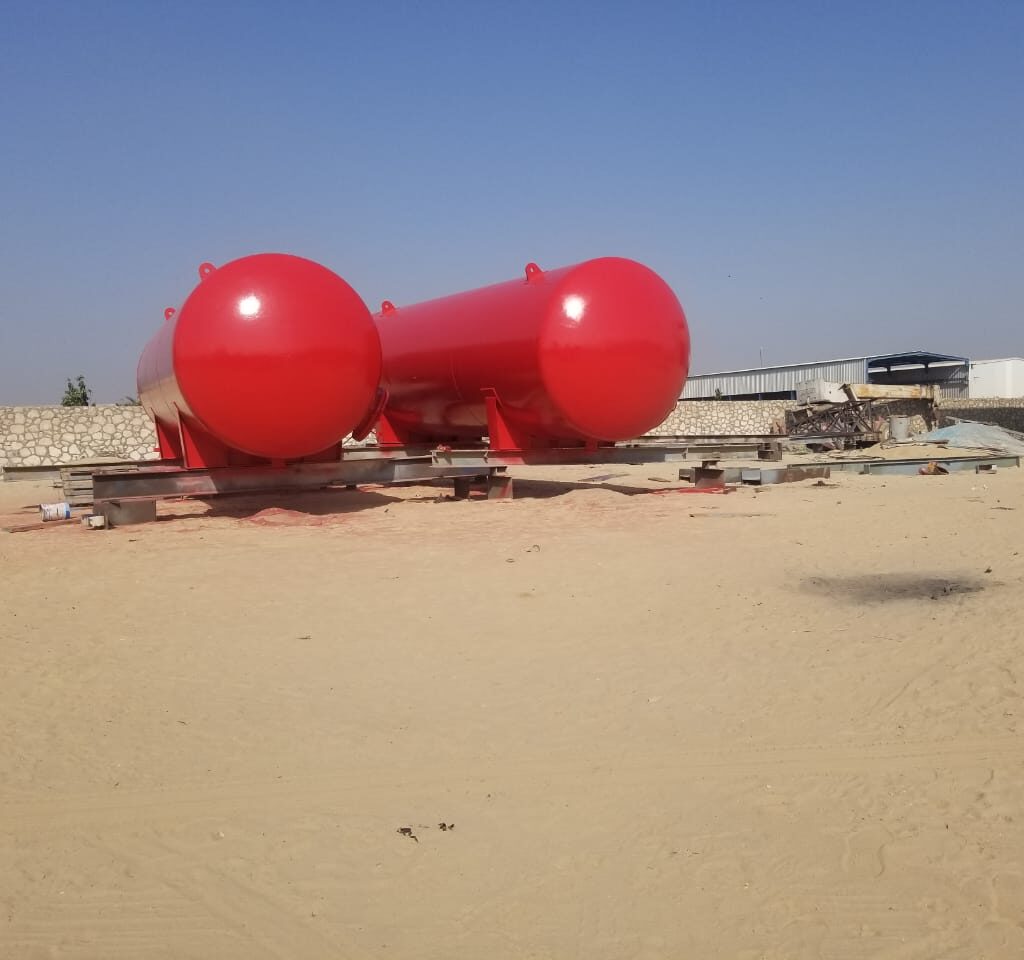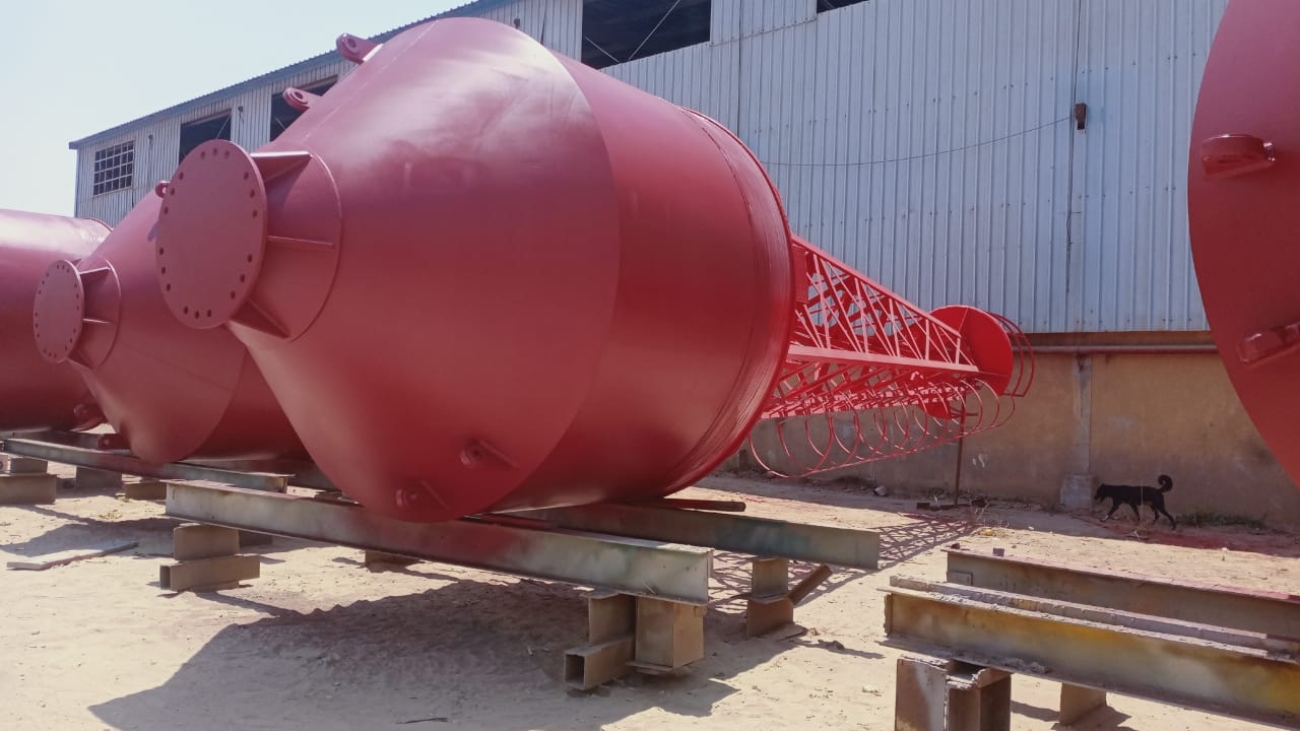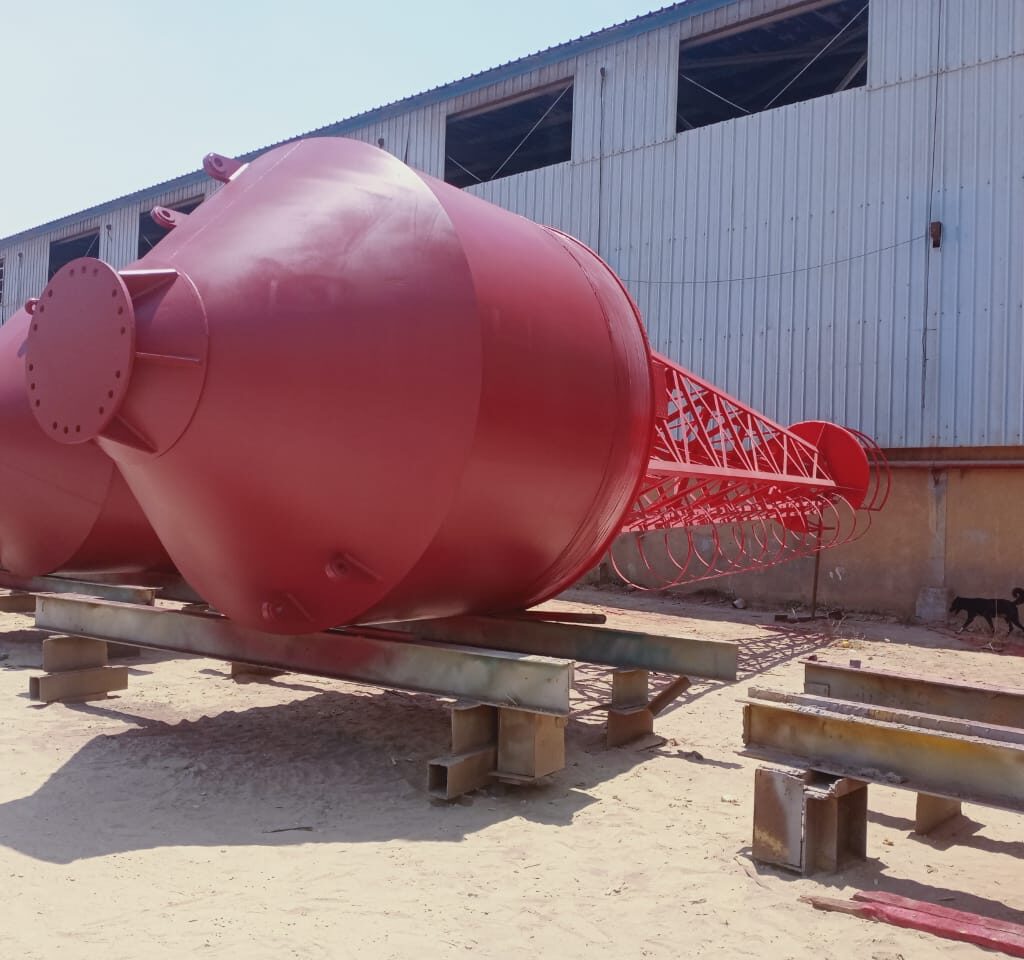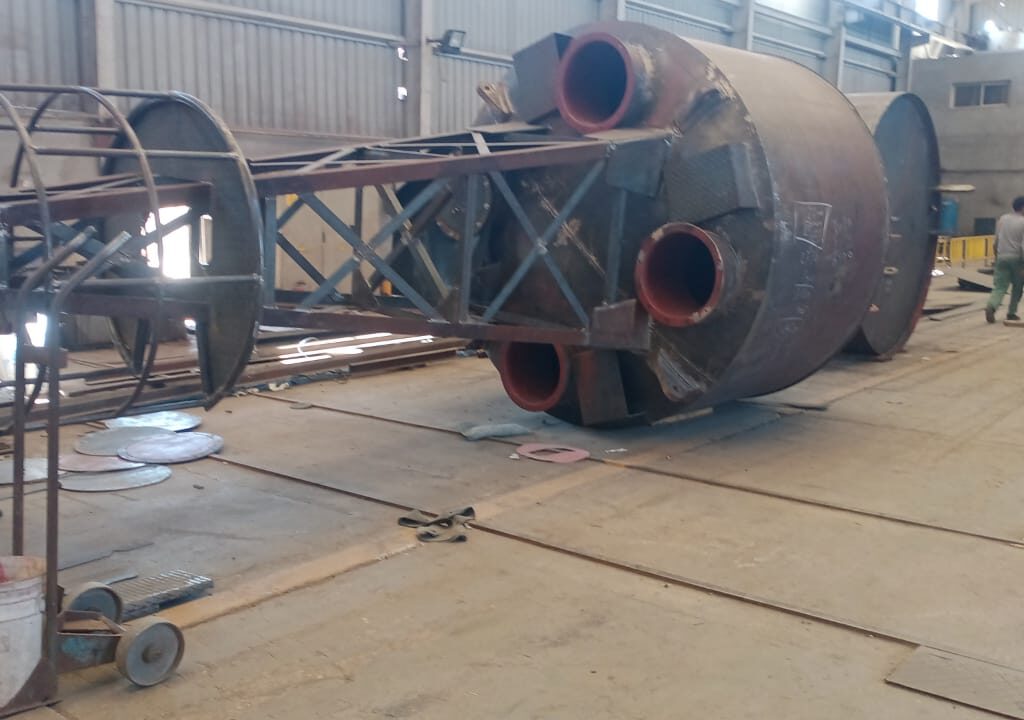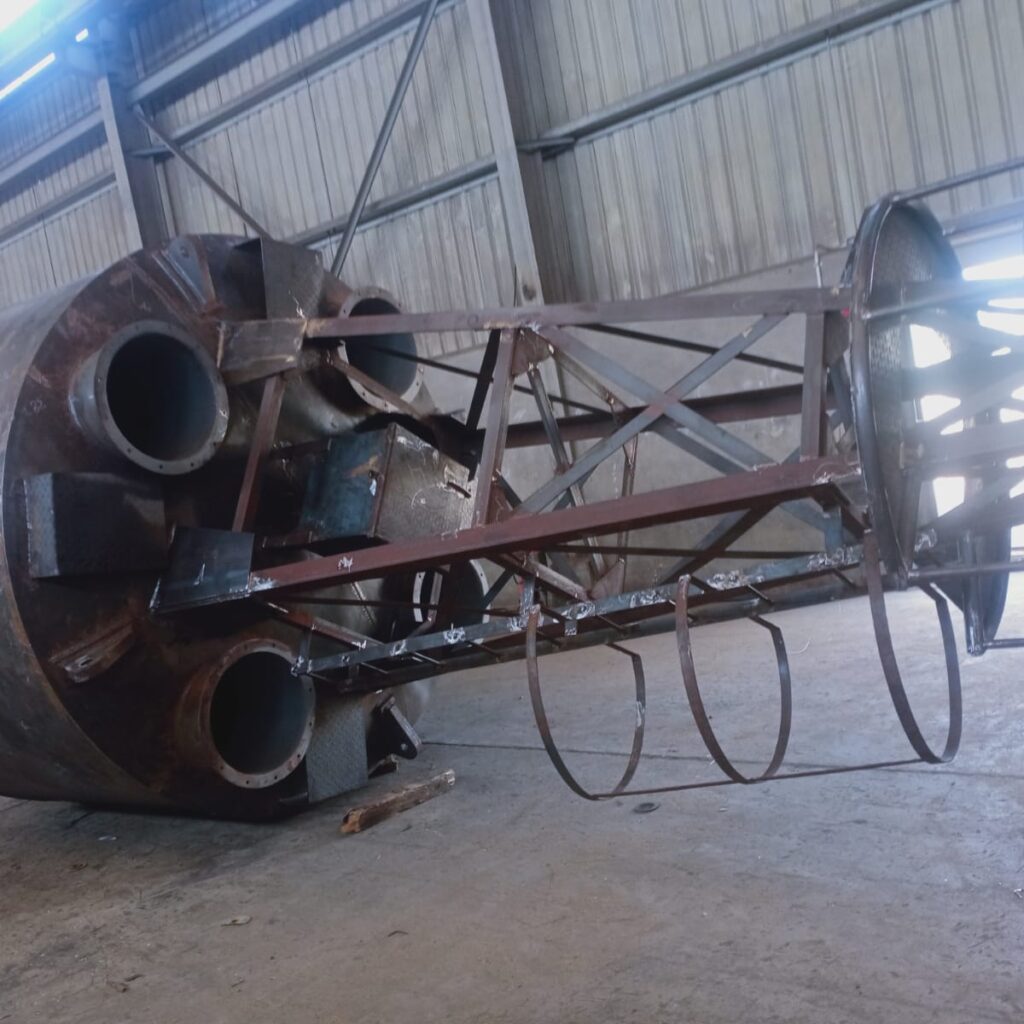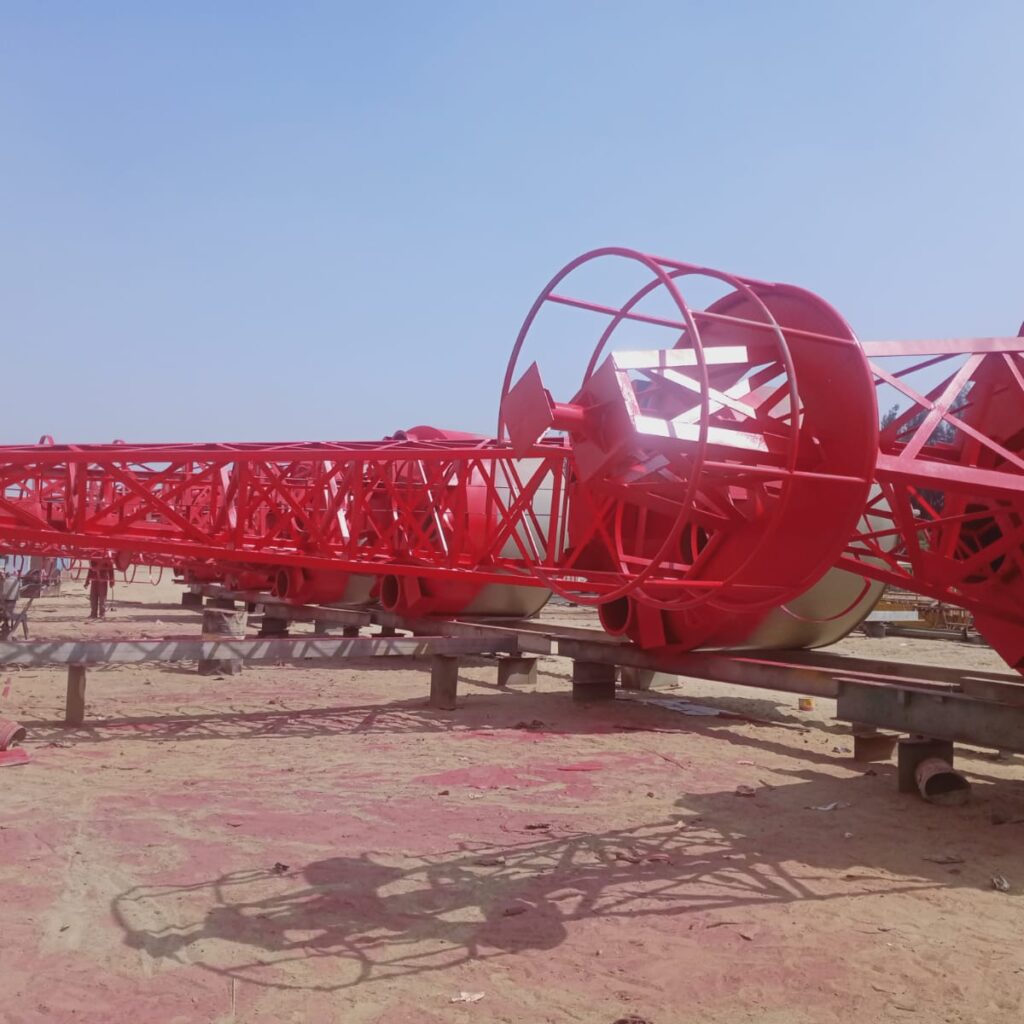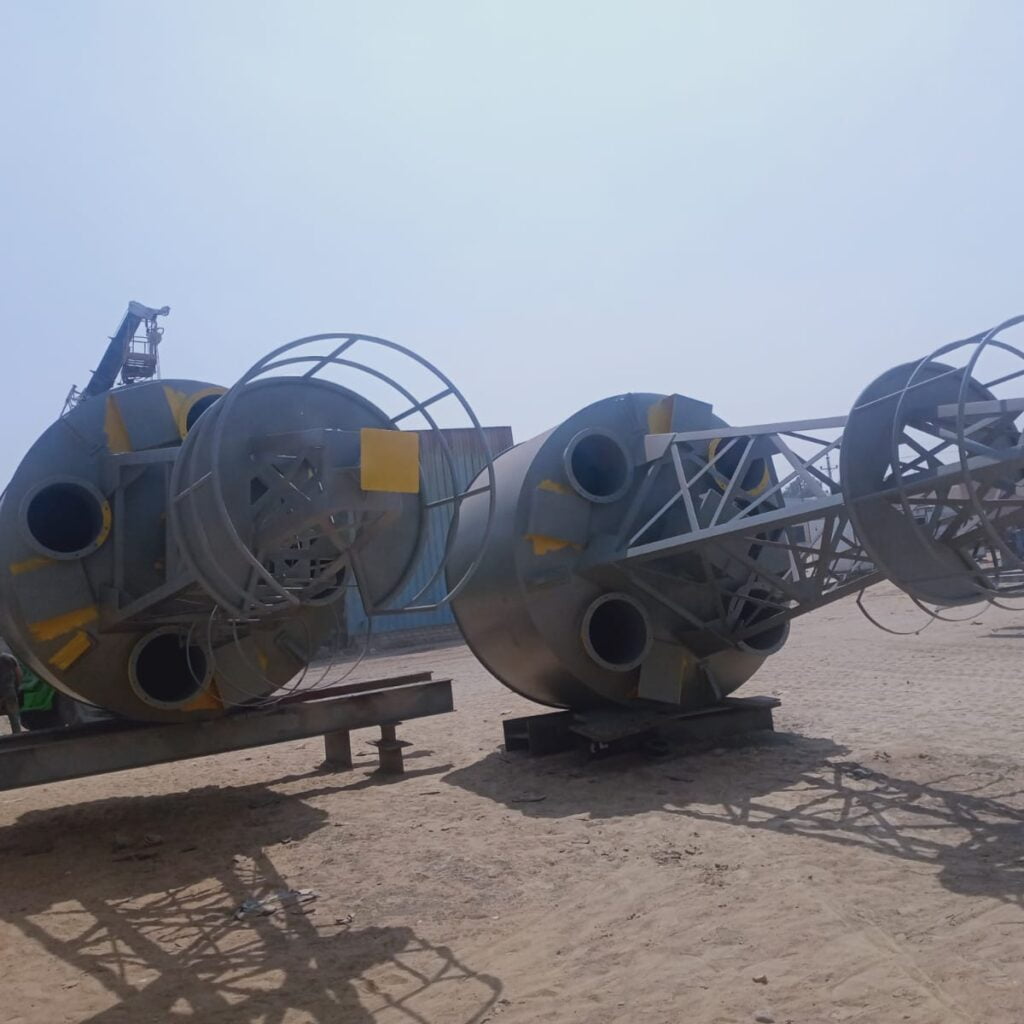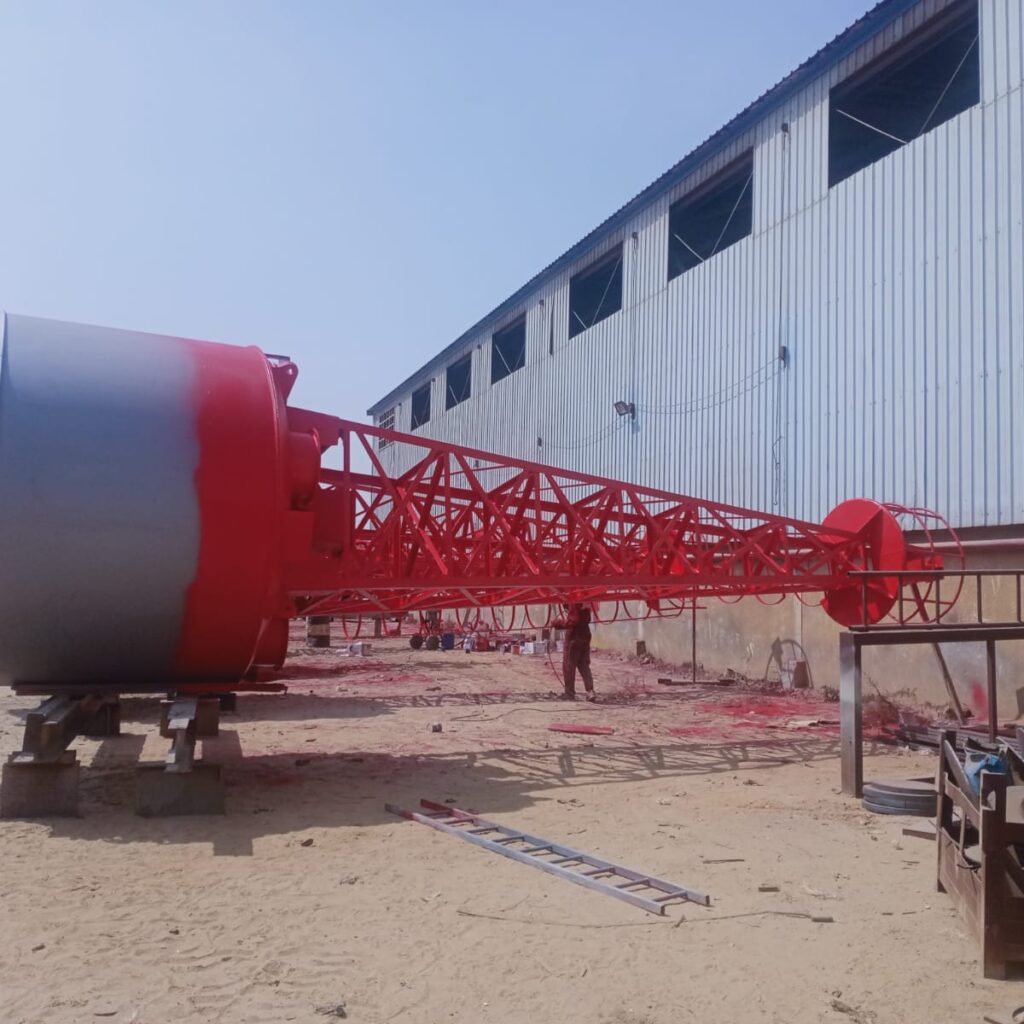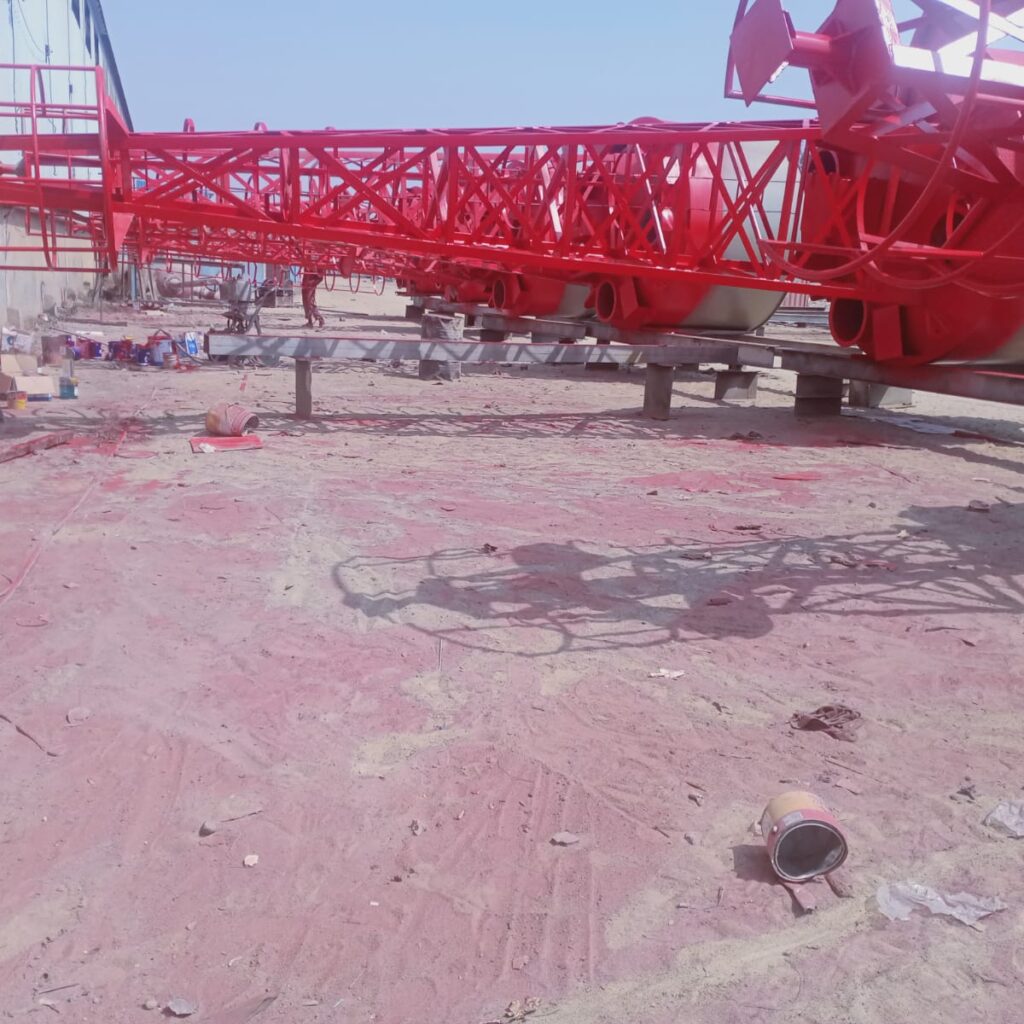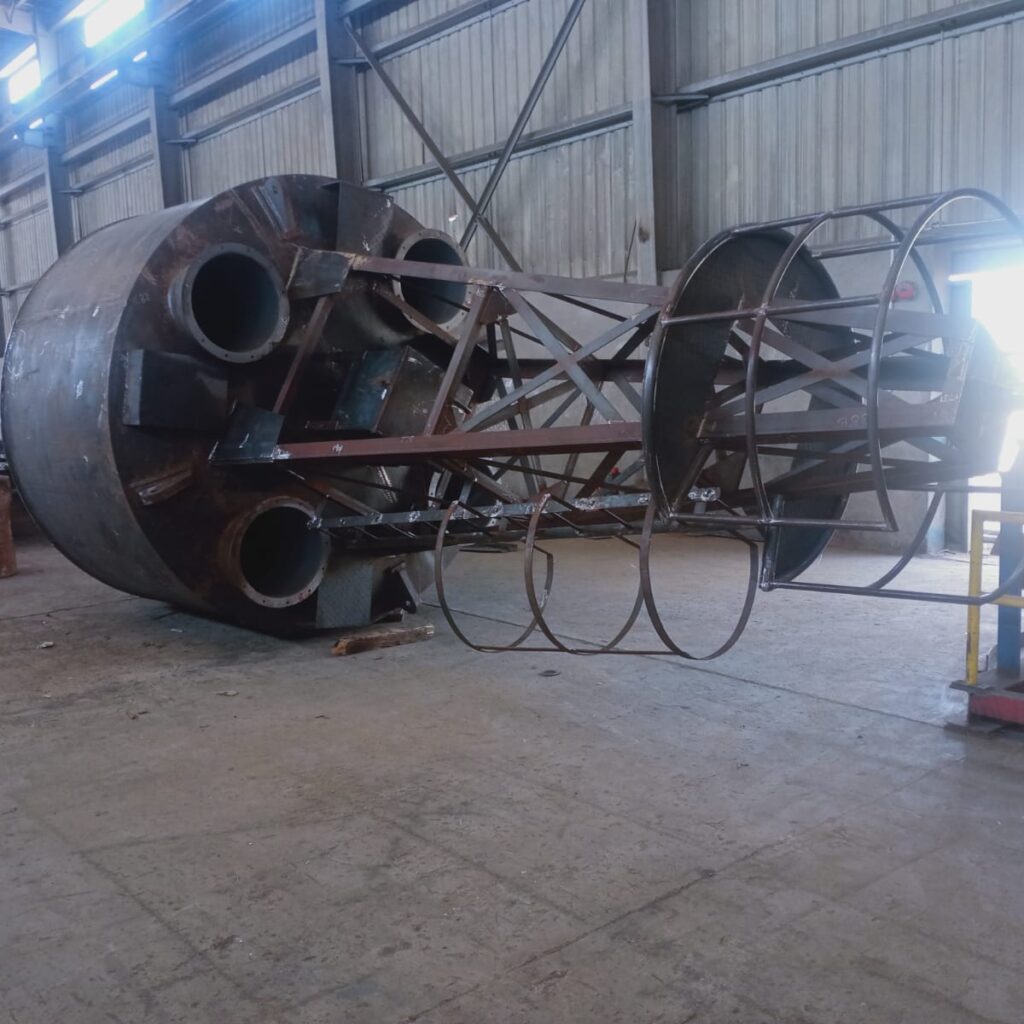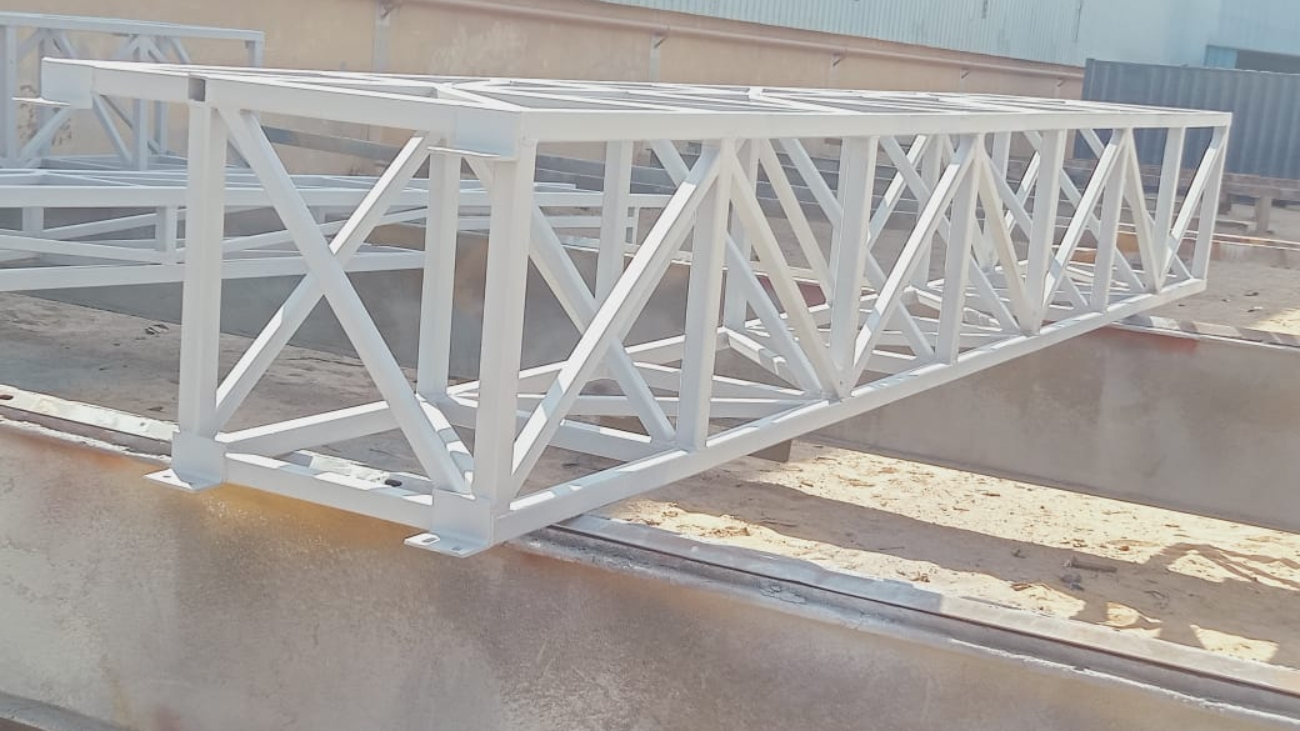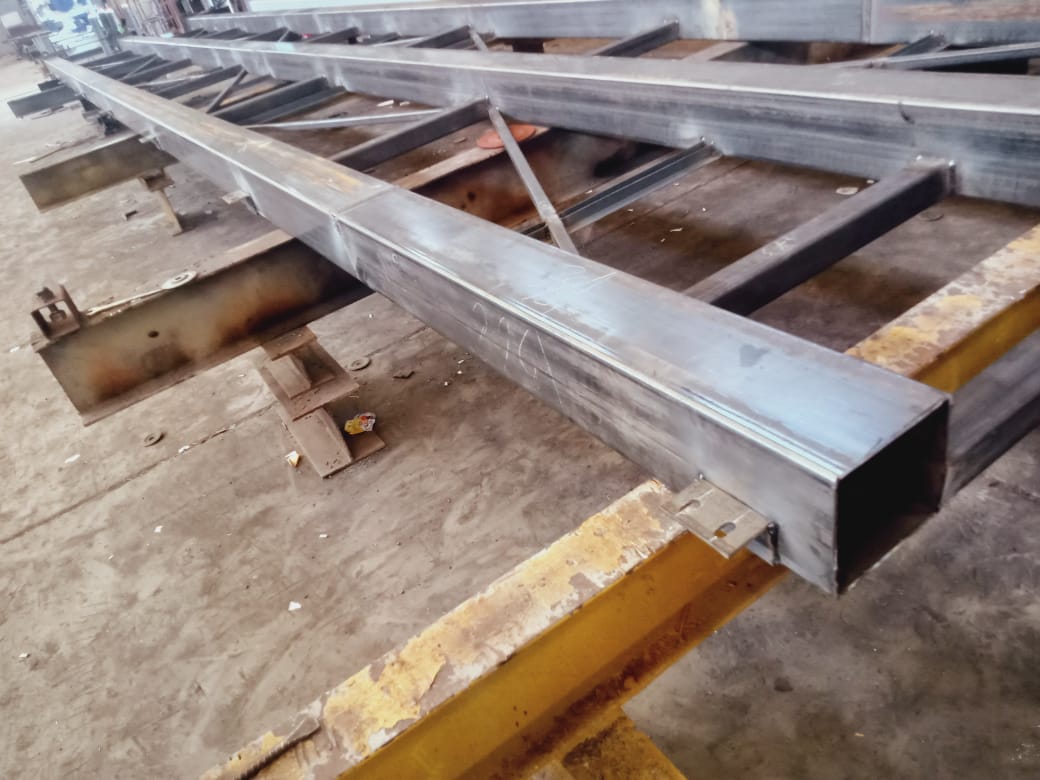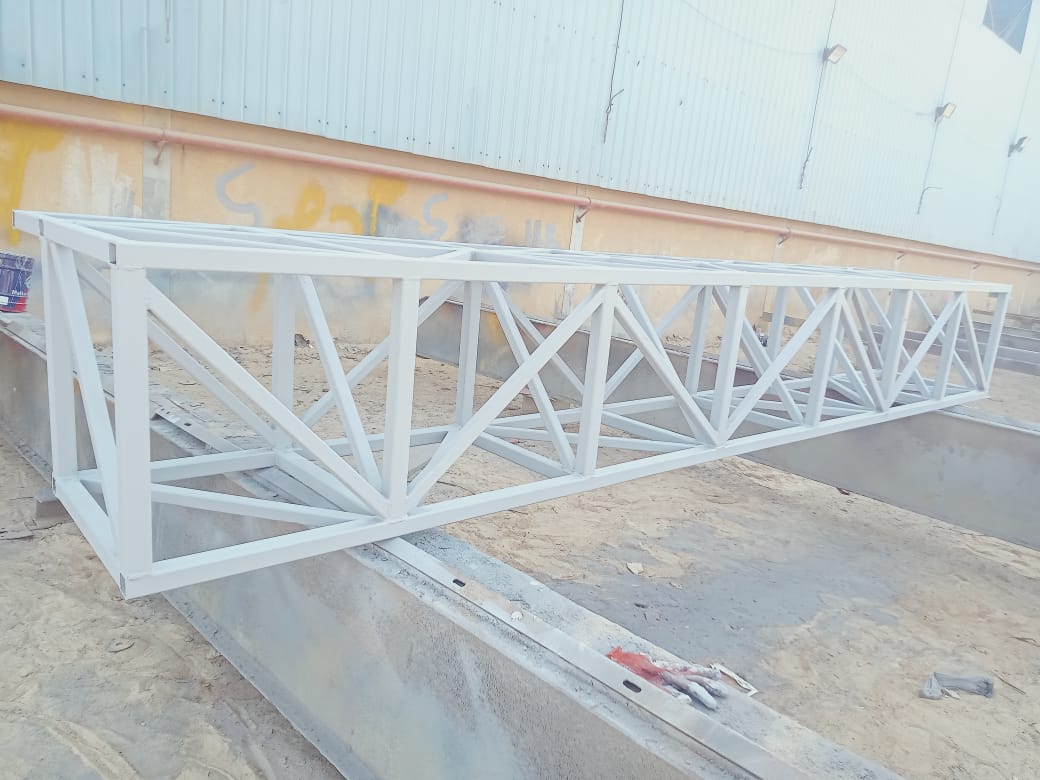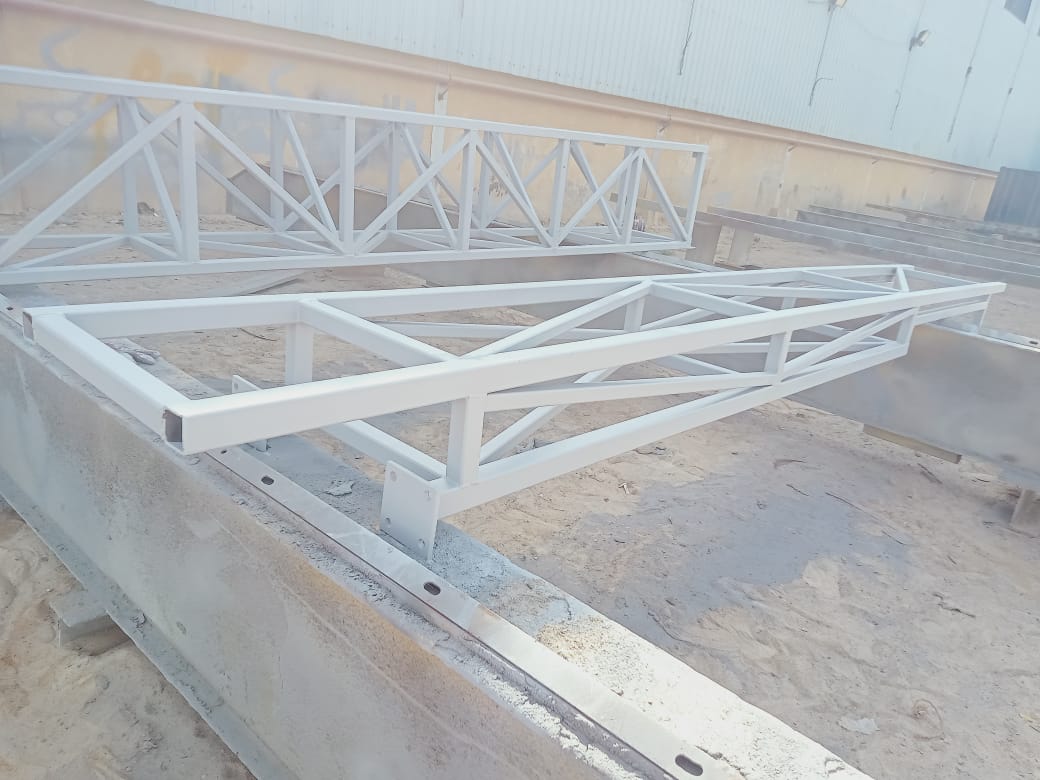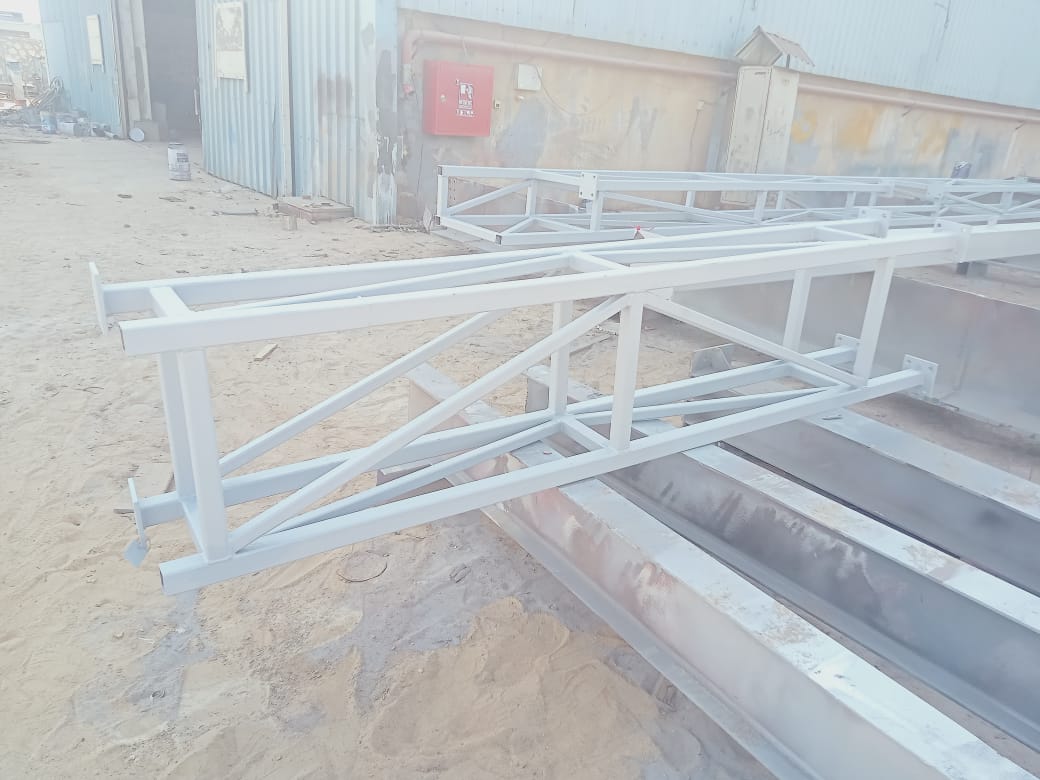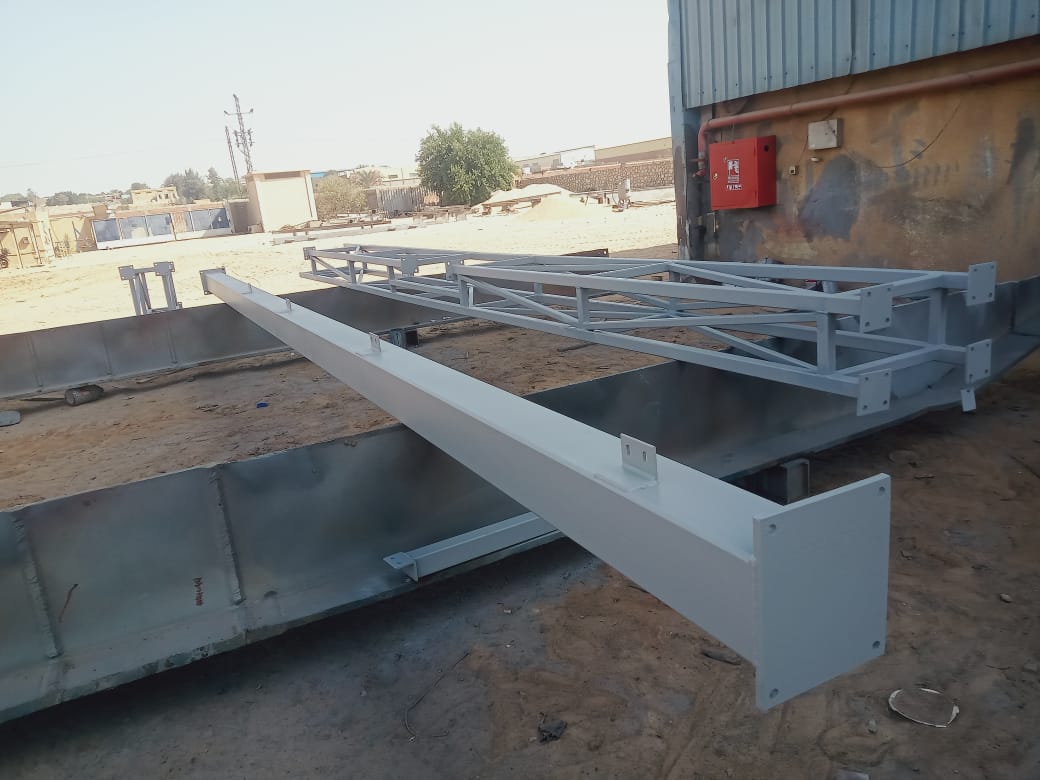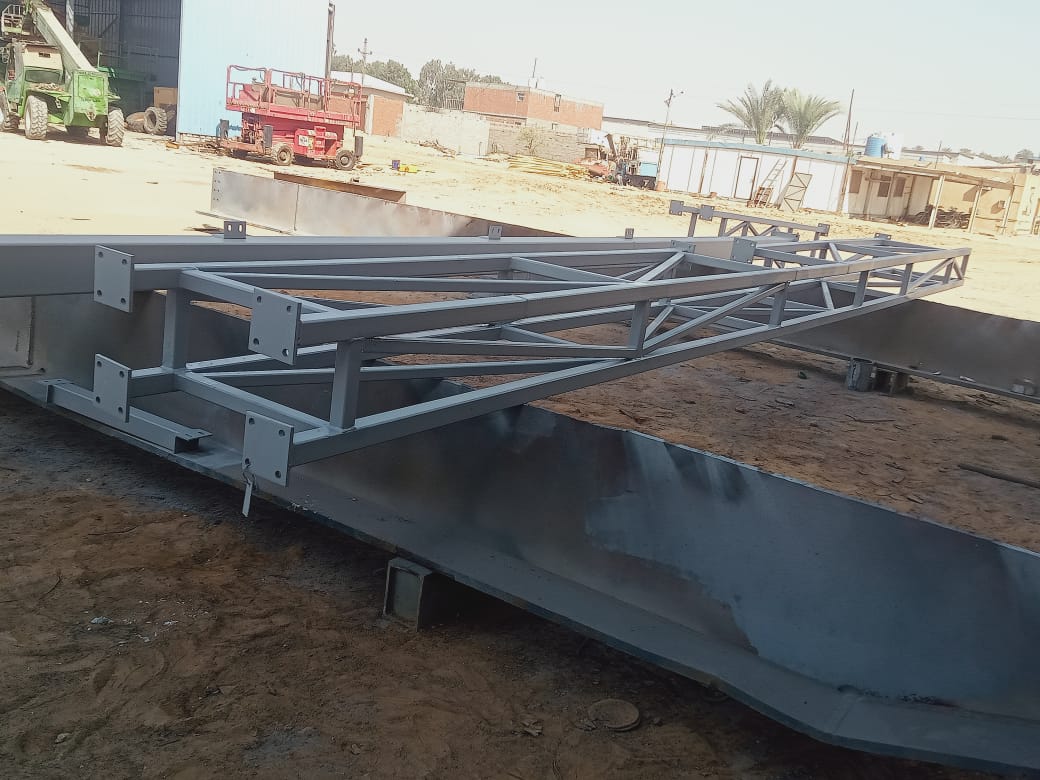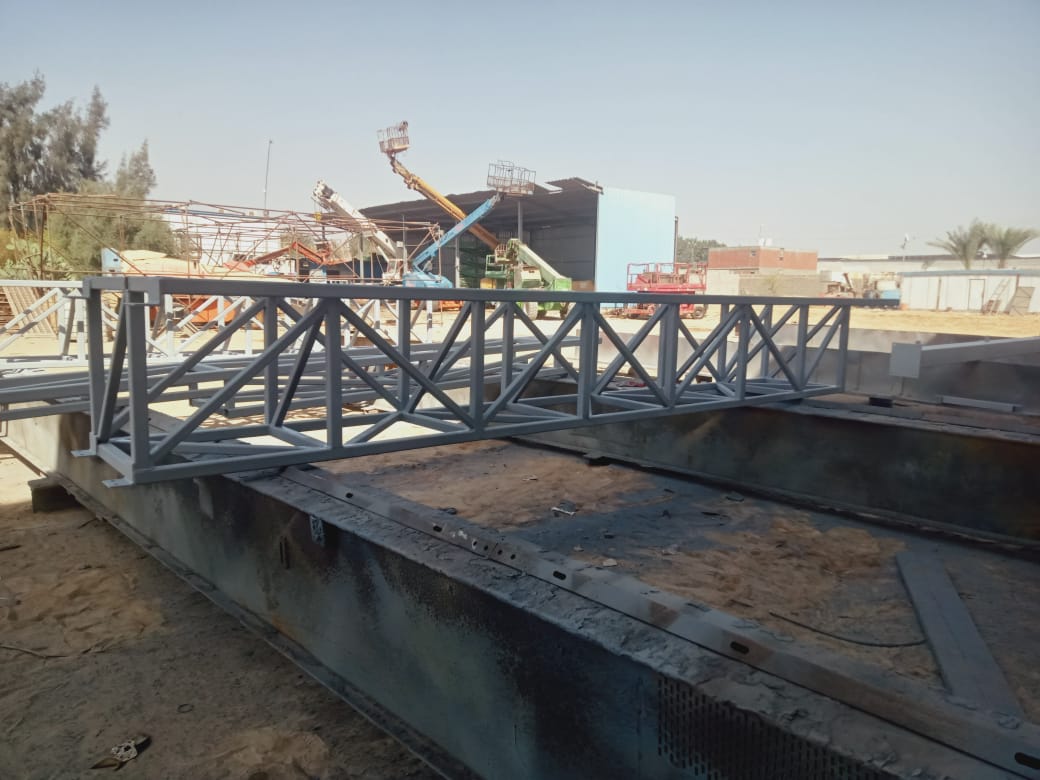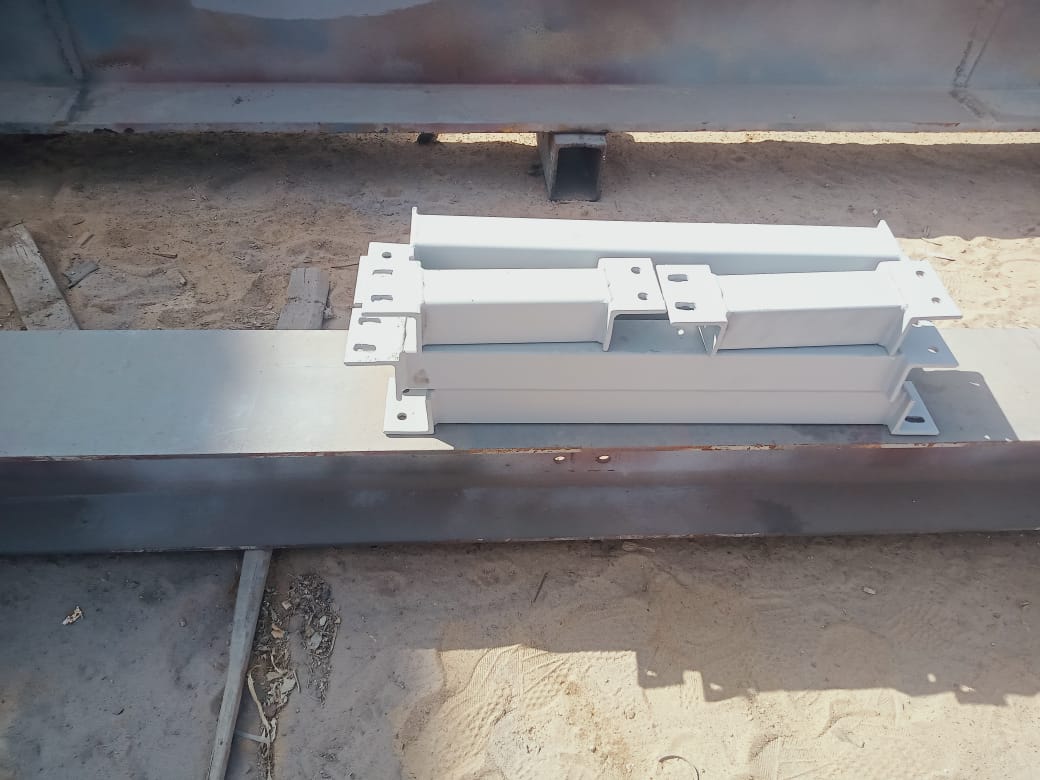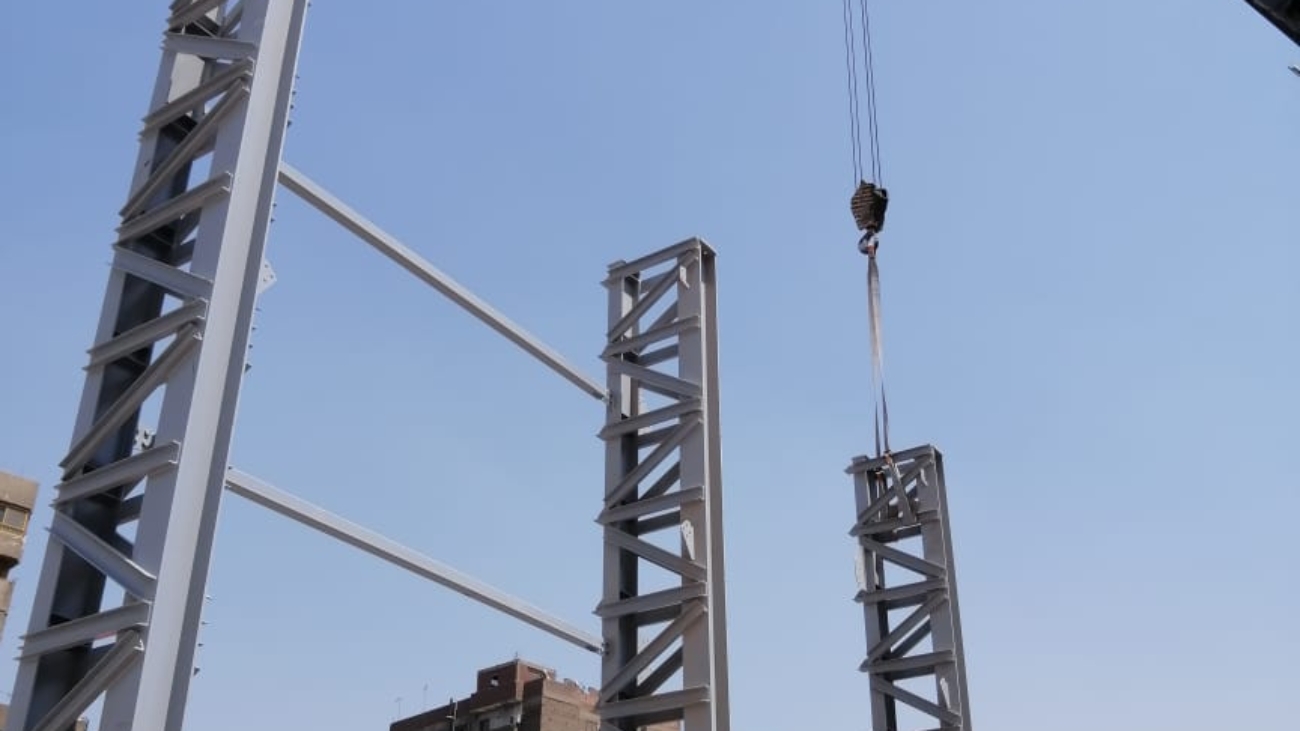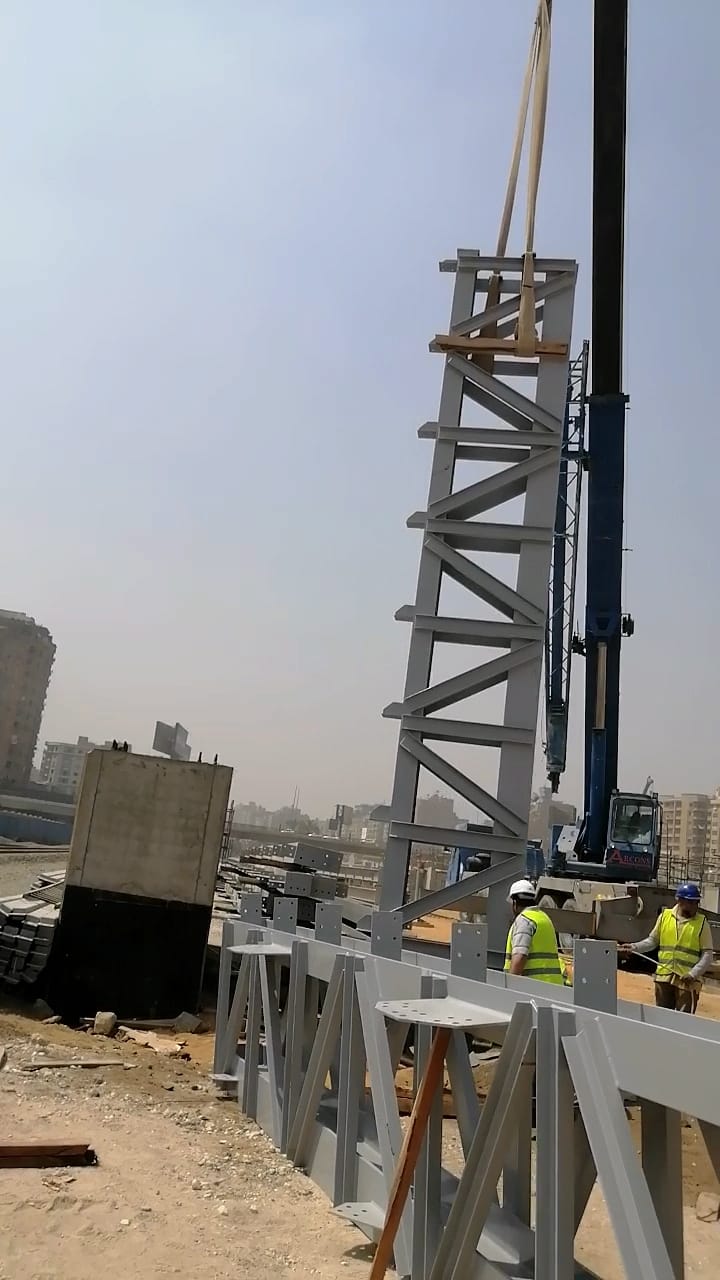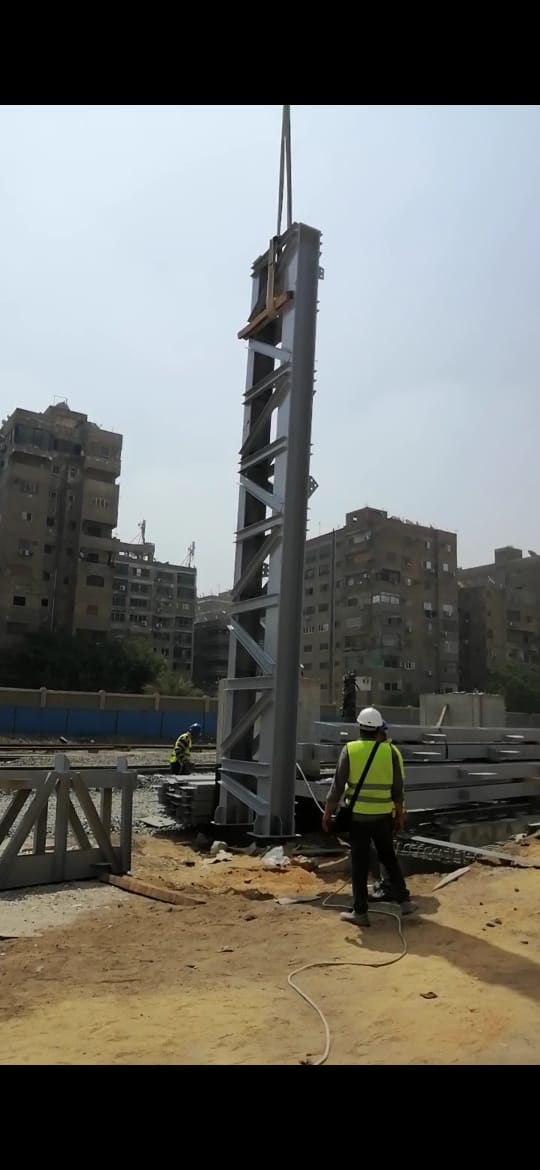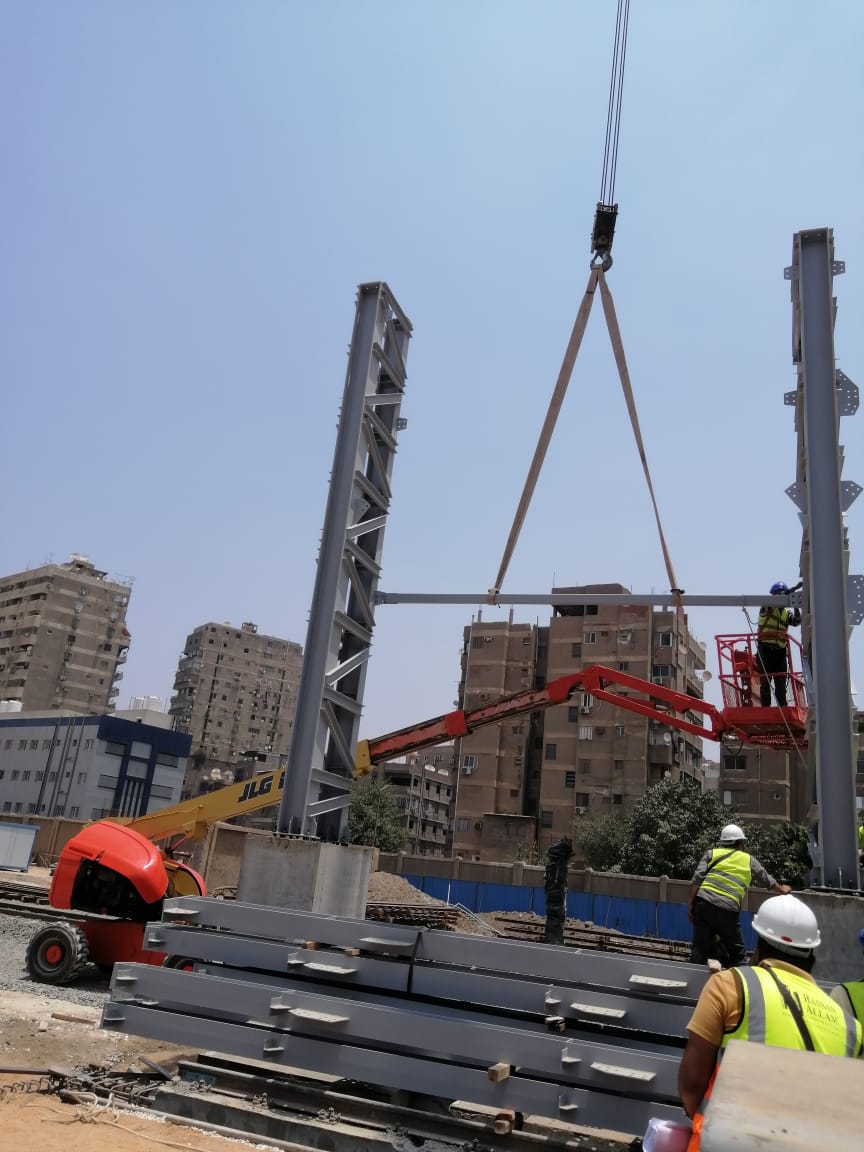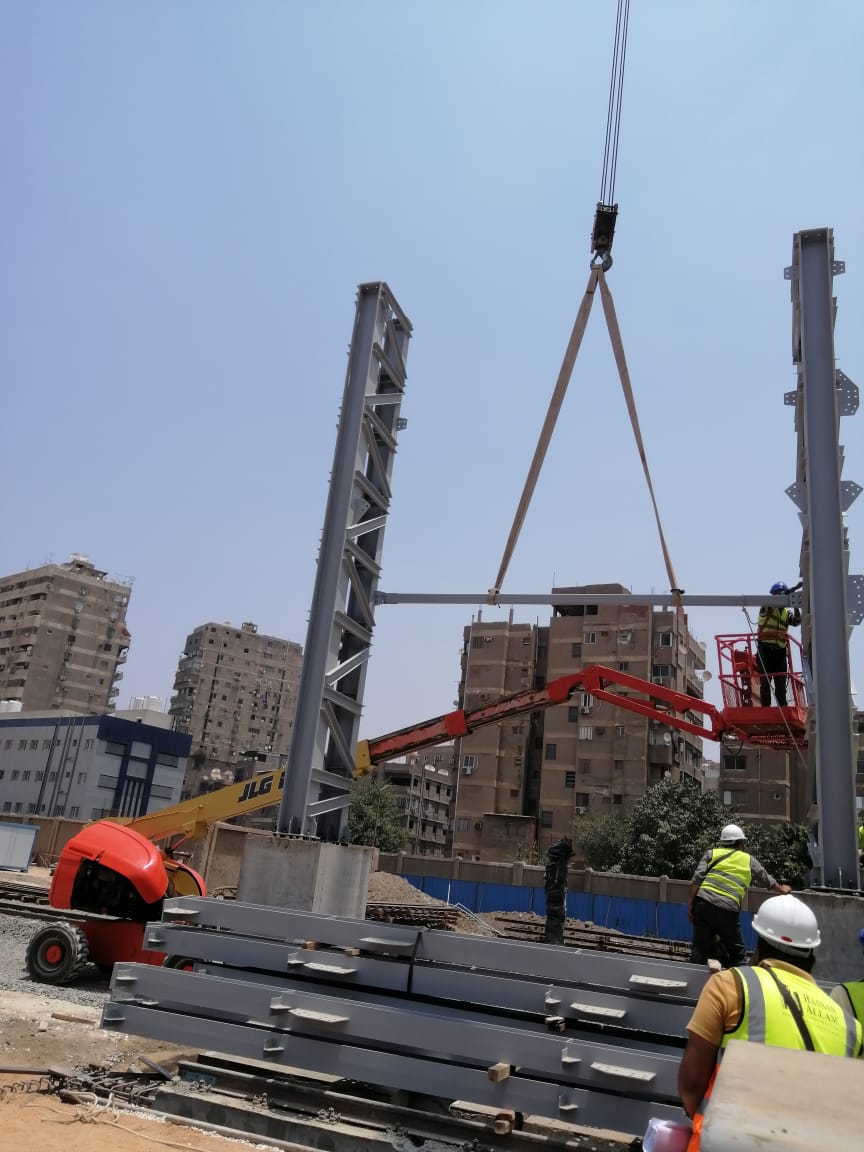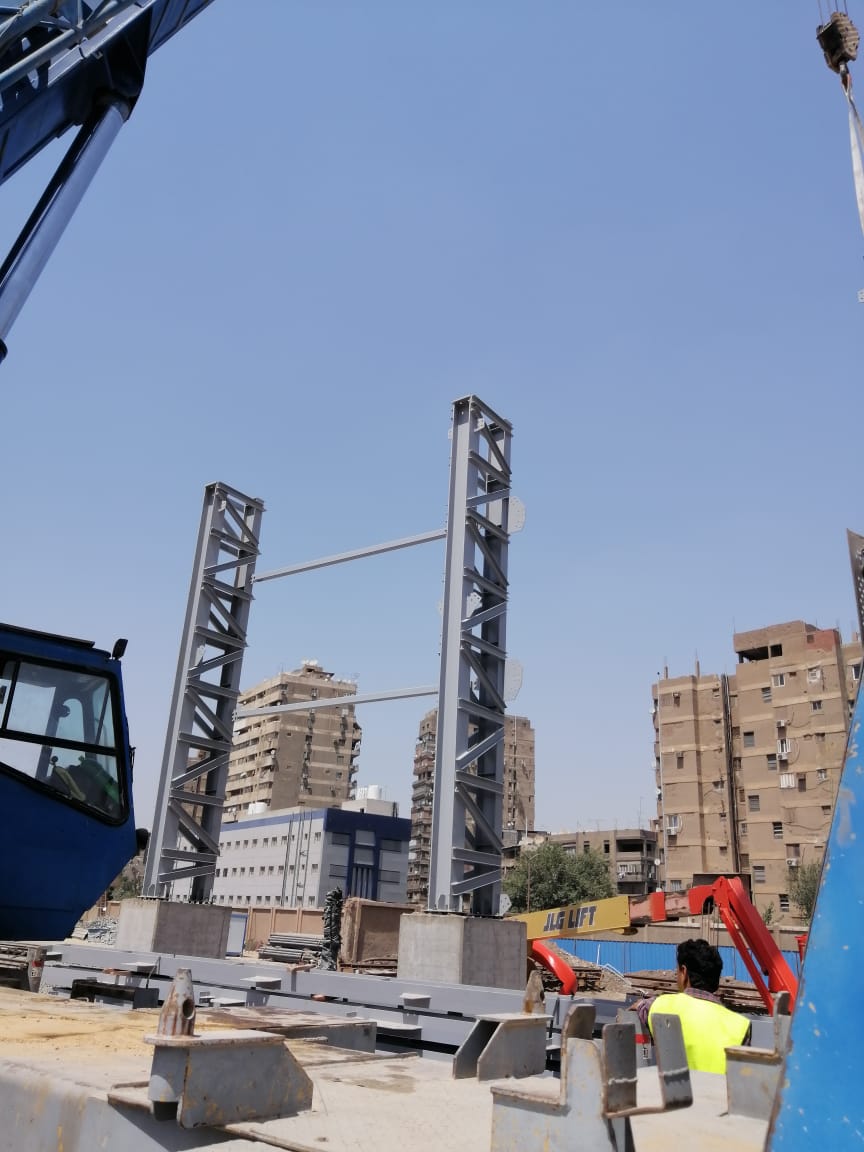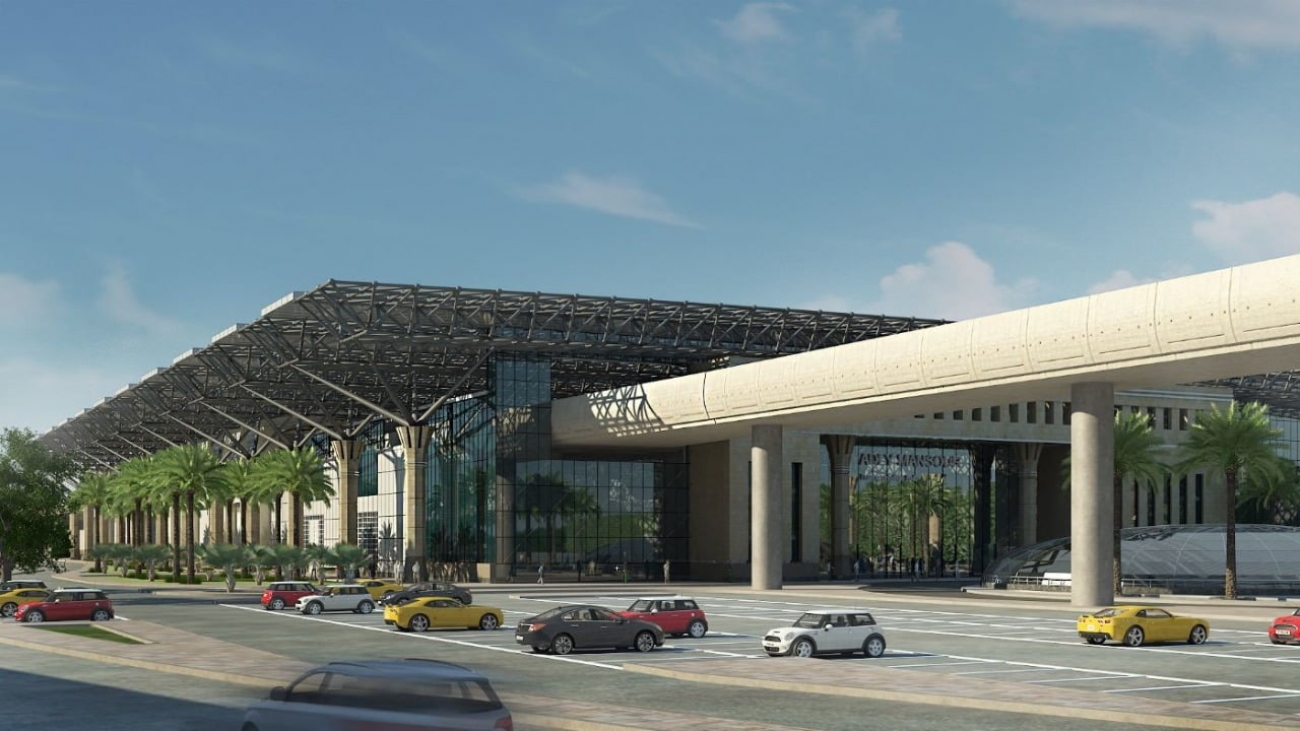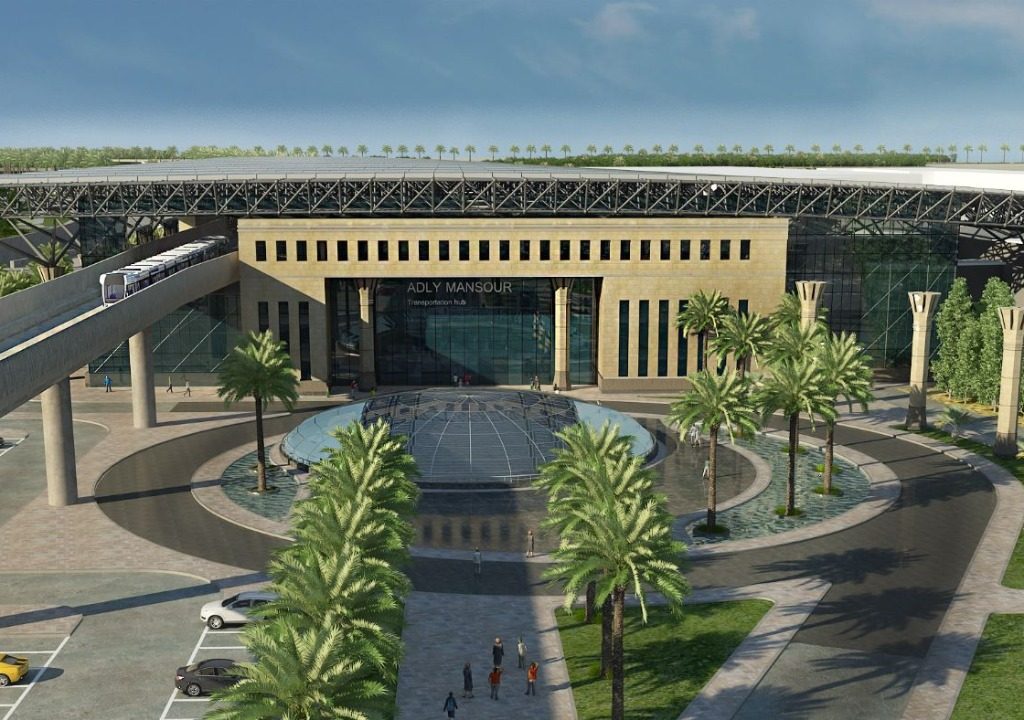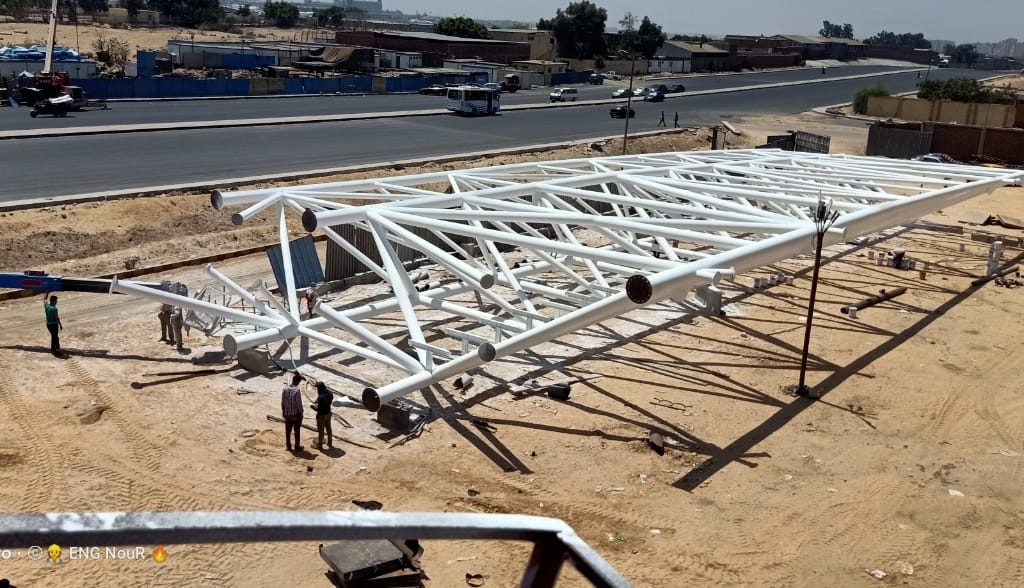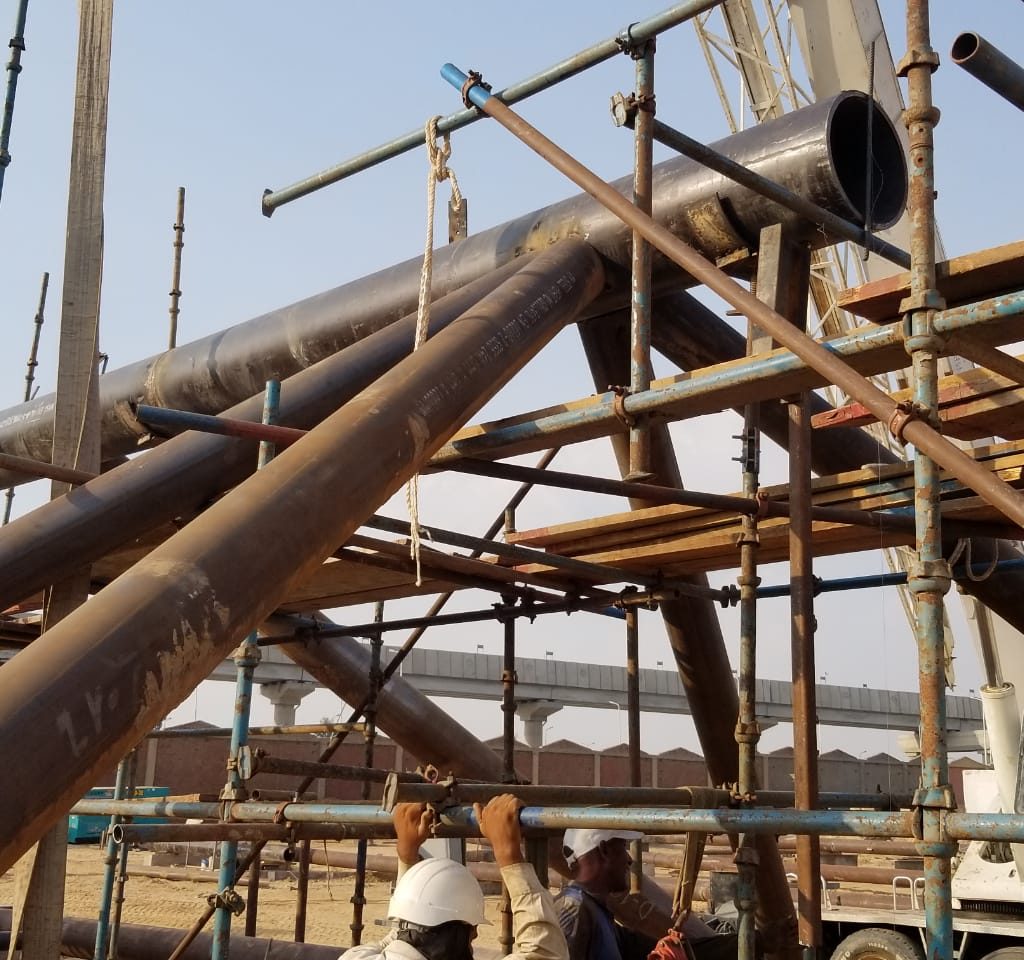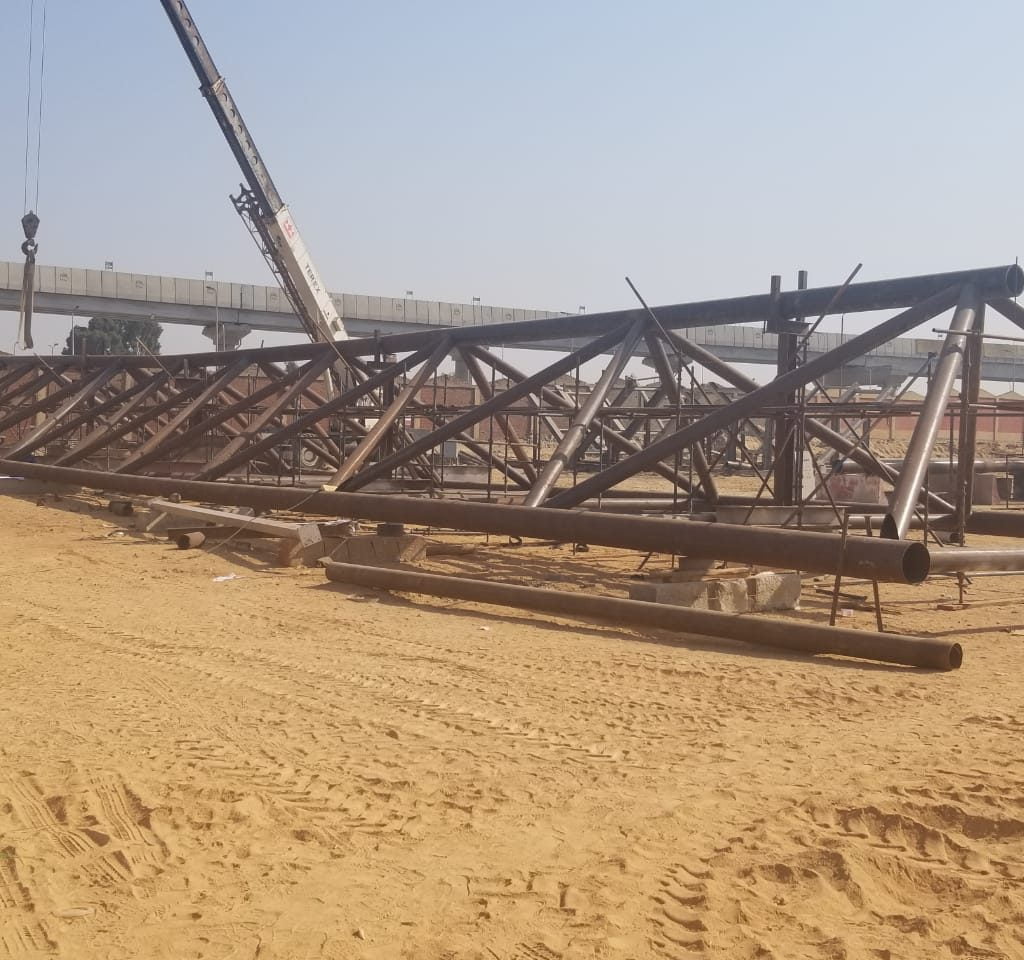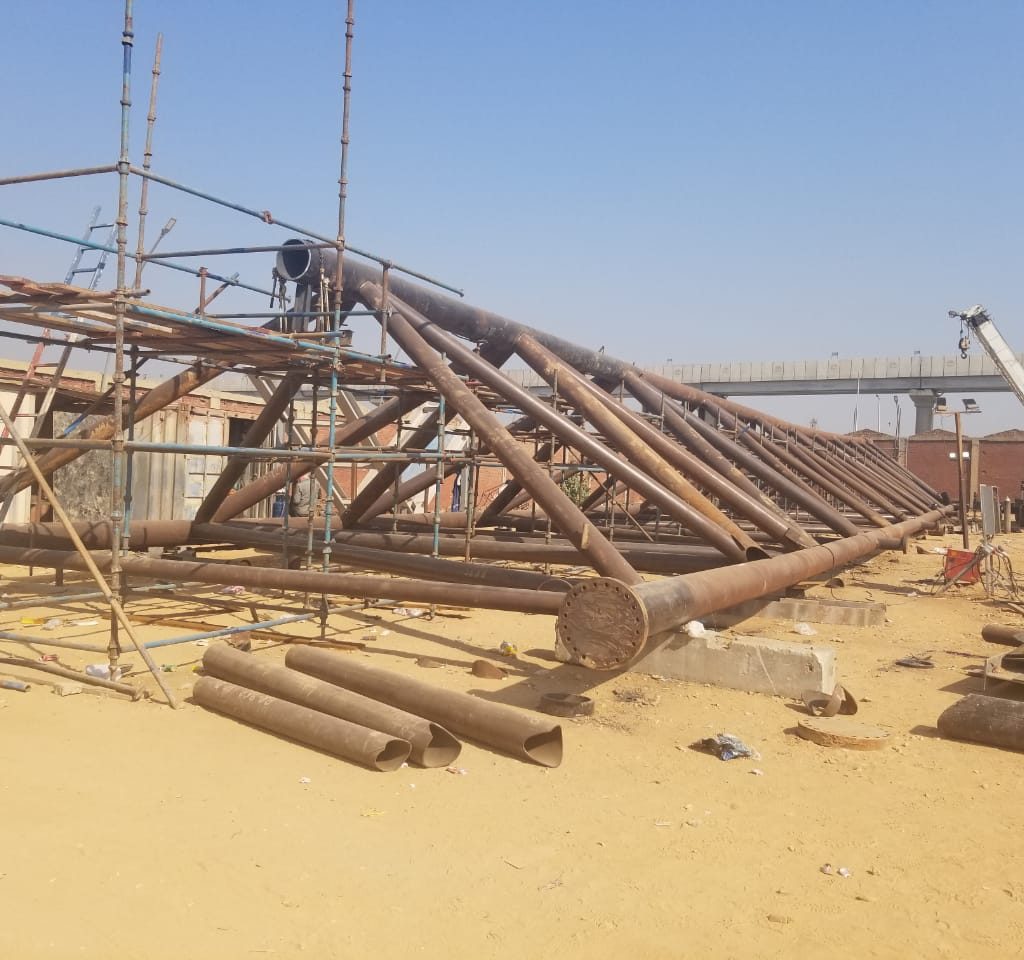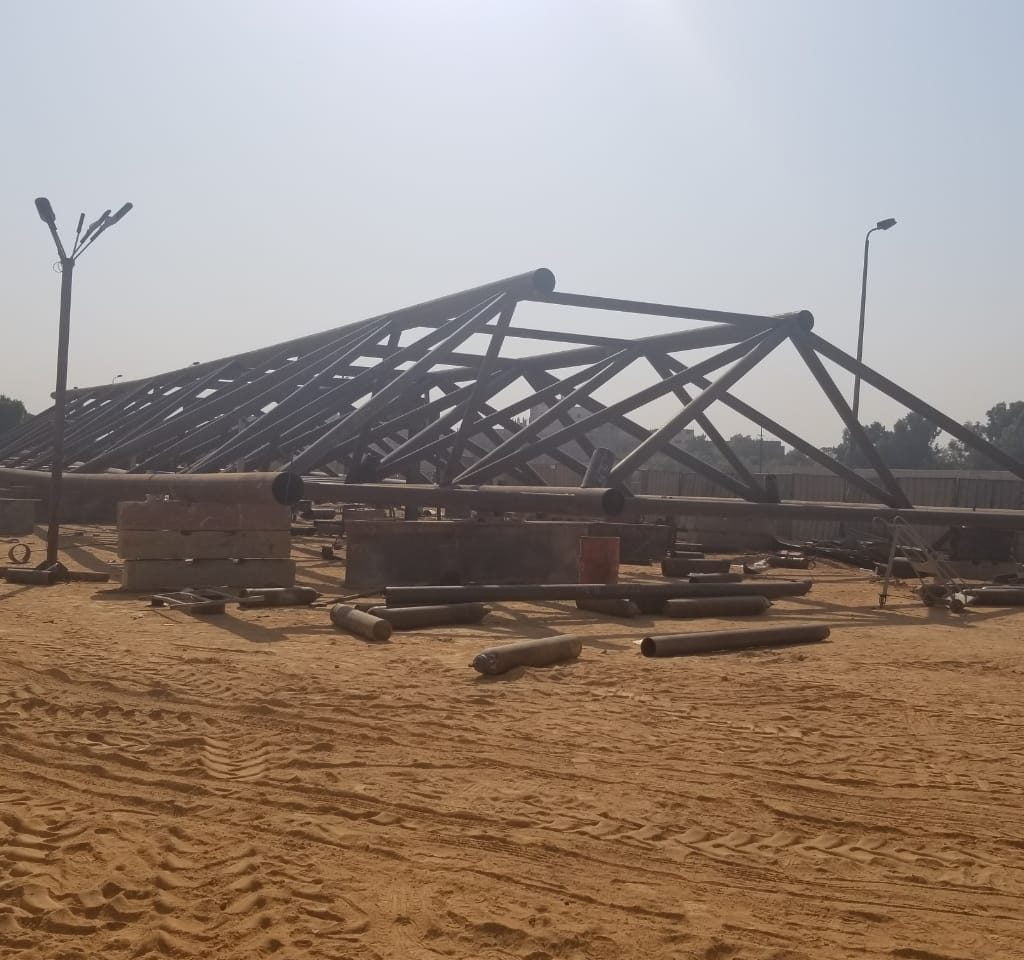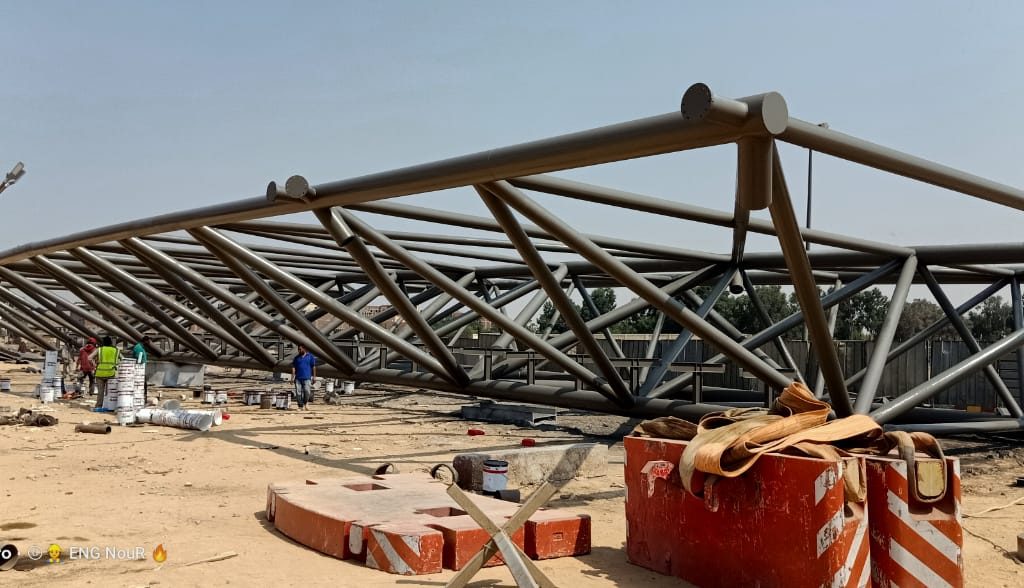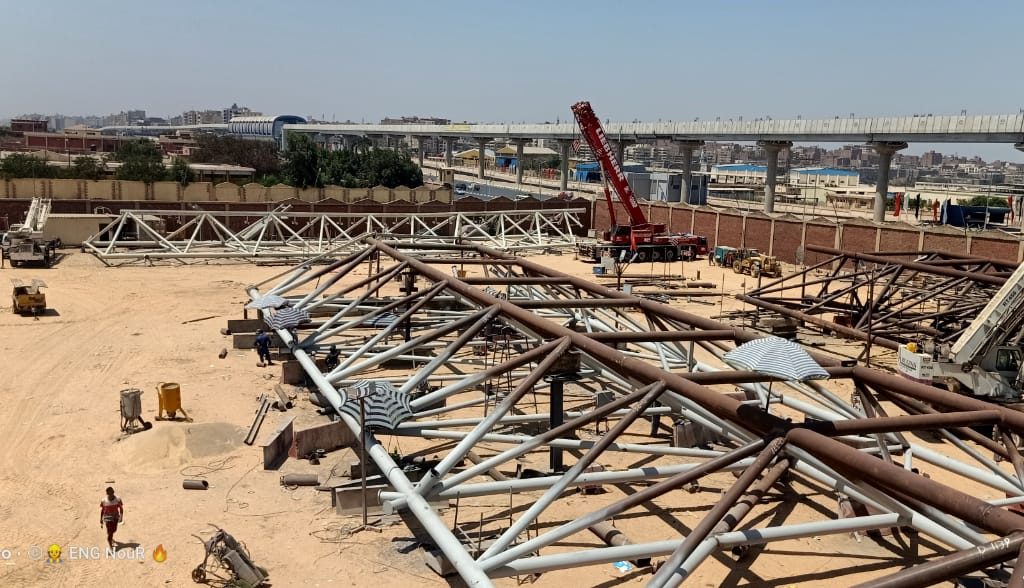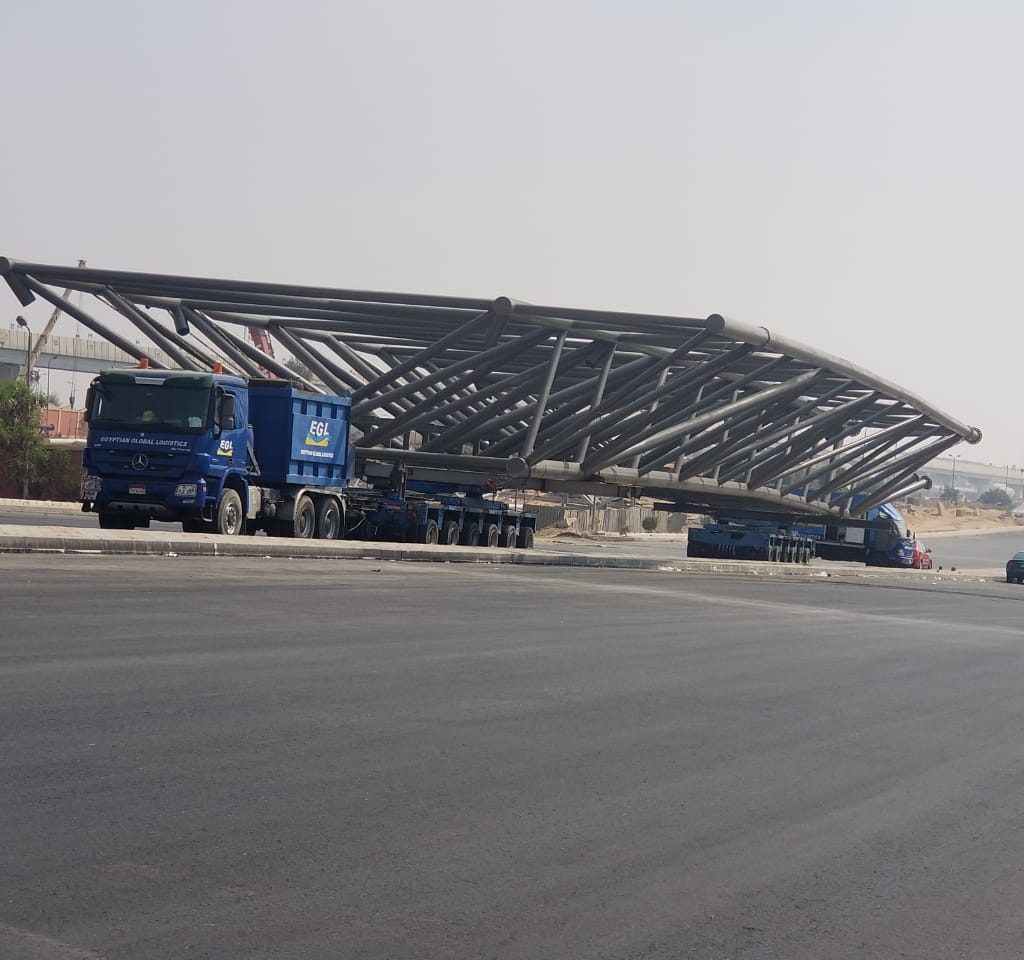ARCONS handing over two floating roof tanks TK1&TK5 to our Main Contractor Petrojet at RAS BADRAN Site – Ready to start Hydrotest and Filling process.
Tank diameter = 110 meters and Height = 22 meters, Type of roof (Floating Roof) Fitting, Assembly, Lifting and Welding of Bottom and Floating Roof Plates for Two Tanks TK1 & TK5: ‐
- Total weight of Bottom Plate and Floating Roof Plate for two tank = 3,384 Tons.
- Thickness of Annular plate = 19 mm, Bottom Plate = 7.6 mm, Roof Plate = 5 mm.
- Using Temporary scaffolding & UPN beams to assembly of Floating Roof Plates & steel structure parts (Inner Rims, Outer Rims, Bulkheads …etc.) and dismantle all temporary beams before starting Hydrotest.
- Using big crane Capacity 250 tons Crawler for complete all works.
Fitting, Assembly, Lifting of Shell Plates for Three Tanks TK1, TK2&TK5: ‐
- Total weight of Shell Plates for Three tanks = 3,500 Tons.
- Thickness of shell plates start from 45 mm to 10 mm with width 2.4 meters.
- Fitting Works on the Ground then lifting.
- Using Hydraulic jacks at installation works.
- All welding works done by Automatic Welding Machines.
How’s Crude Oil Stored?
Fixed Roof Tank and Floating Roof Tank are the two widely used crude oil storage tanks used in the United States. Let’s delve deep into each to know how its stored –
1. Fixed Roof Storage :-
These crude oil tanks are the most common storage units for oil. While storing, hydrocarbons such as liquids, volatile organic compounds, hazardous air pollutants, and some inert gases vaporize and collect between the liquid level and the fixed roof tanks.
As the liquid level in the tank changes, the gases are slowly released into the atmosphere. An easy way to prevent this is to install vapor recovery units. Using foam chambers is another potential solution. These help cover flammable hydrocarbon or water-miscible liquids having low expansion foam or fire extinguishment.
The foam occupies the vacant space that initially had air. Experts believe that these prevent hazards as it directs all the foam onto the flammable liquid surface, irrespective of the weather condition.
2. Floating Roof Tanks :-
Floating roof tanks are a better option compared to fixed roof tanks as it helps prevent vapor emissions. According to experts, the chances of fire or an internal tank explosion are also less in floating roof tanks.
They further add that these crude oil tanks are the best option for storing stable liquids, with dynamic loads near to nil. However, adverse environmental conditions affect floating roofs as an accumulation of snow and rainwater may result in roof submersing in the stored liquid.
An area of concern with floating roof oil tanks is the dynamic loads that act upon the roof due to the constant splashing of water lead to flooding of roof compartments. This, however, can be corrected by having sufficient stiffness in the circumferential direction near the roof.
Also, when the liquid exits the bank, the floating liquid slowly approaches the bottom leaving behind liquid droplets. This results in the evaporation of liquid droplets in the atmosphere.
How Long Crude Oil can be Stored?
Storing crude oil in above-ground storage tanks is a costly affair as it often tends to lose their viscosity. According to Reuters, a time period ranging between 30 days to 6 months is optimal for storing crude. Beyond this period, chances for the oil to lose its viscosity is high.
How Do You Clean a Crude Oil Tank?
Prolonged oil storage in a crude oil tank often leads to the accumulation of sludge at the bottom of the container. So, it’s essential to remove the sludge periodically.
Here’s you can clean a crude oil tank –
1. Replace the old sludge-tainted oil tank with a new one.
2. Use heating oil additive as sludge dispersants or softening agents.
3. Now, unclog the lines. The use of additives stirs up sludge from the tank bottom and clog oil lines and filters.
4. Next, remove the sludge and clean the tank thoroughly.
To avoid issues from the accumulation of sludge, ensure to clean your oil tank every three years.
So, here was our complete guide on oil storage tanks. Let us know in the comment section if we’ve missed out on something important.
